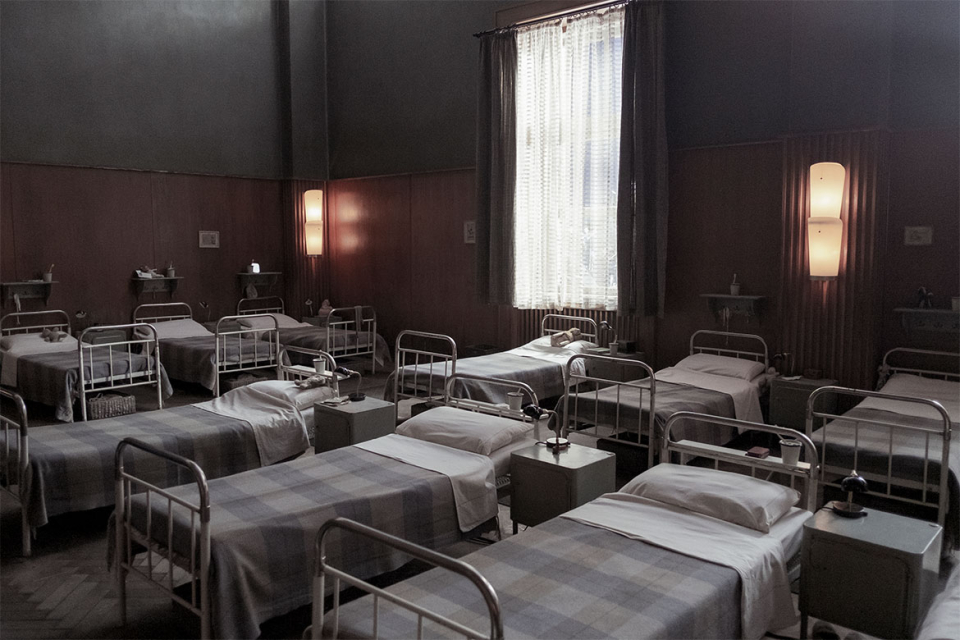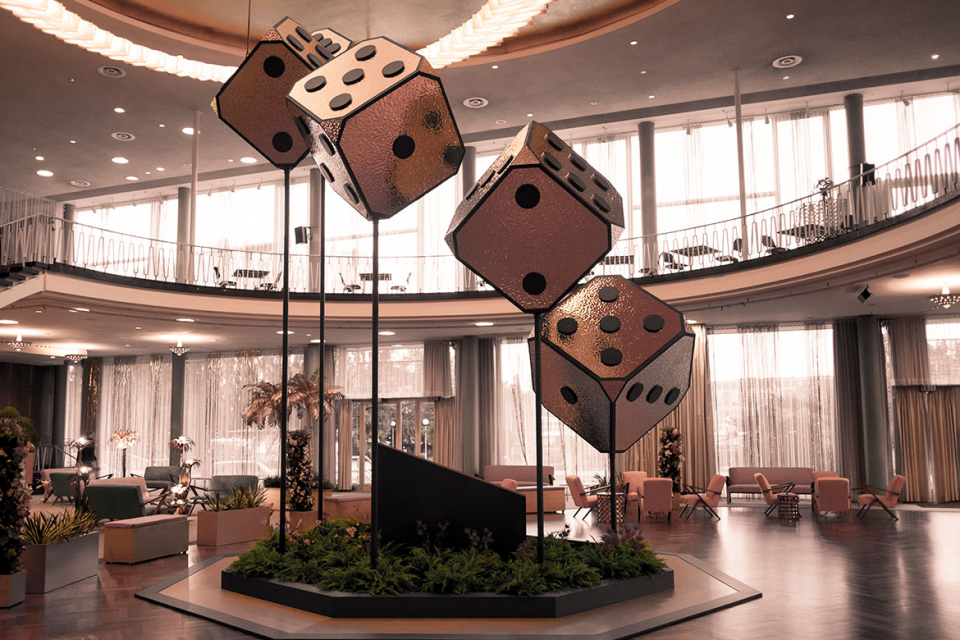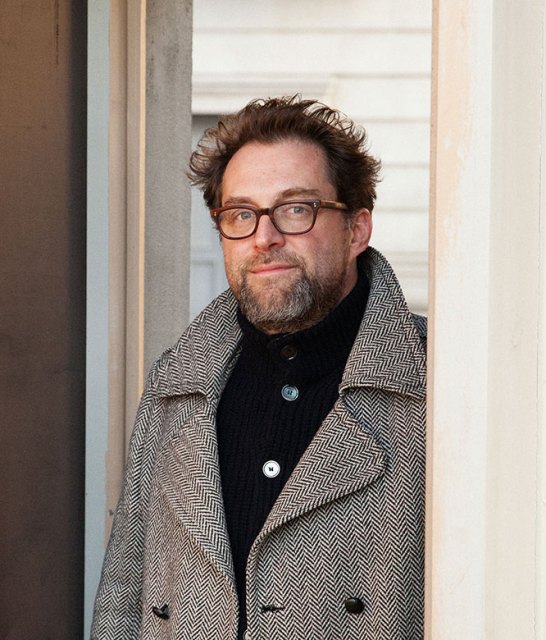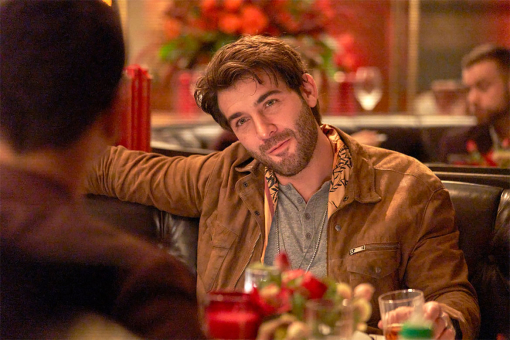One of the first things people mention when they talk about Netflix's hit limited series The Queen's Gambit is the incredible look of the production.
German production designer Uli Hanisch has been completely bowled over by the response.
In an interview from his Berlin home, he says, "I don't know what to say about that. It's almost confusing, because I do not really know what is the difference to any other show I've done before. I'm lucky enough to have done pretty nice projects over the years and very many period stuff, like The Perfume and Cloud Atlas. Those movies have been beautiful and kind of extraordinary as well.
"But even on Babylon Berlin - there we also got very strong responses, but nothing, nothing ever, is to compare with the responses of The Queen's Gambit. And for me, it's still a little bit like a miracle. I do not know exactly what happened. Why is everybody so mad about it? I don't know!"
Set in the 1950s through the late 1960s, the series follows chess wunderkind Beth Harmon as she plays chess and beats the best of the best around the world. Hanisch's job was to make realistic sets and interiors to reflect the era, as well as to reflect the inner journey of the heroine of the piece. The series was shot entirely in Europe, with a primarily American crew. That crew helped Hanisch to know he was getting it right.
One of the primary sets was the interior of the house of Beth's adoptive parents, the Wheatleys. Many Americans, including the American crew, have noted that the interiors reminded them of their grandparents' houses.
Hanisch says, "We shot the whole thing here in Berlin anyway. And so the Wheatley House, the interior was built onstage in Berlin. So you always have that actual sensation when you come into a sound stage, which is ugly and dusty and whatever. And then you just walk through a door, and you see that wooden box from the outside. And it looks like whatever.
"And then you walk inside, and suddenly you are somewhere else.
Here all of the American crew went inside, and almost everybody said exactly that, 'Wow, this looks like exactly like my grandmother's or maybe my great aunt or whatever's house,' which was, of course, for us a very important thing, not only a compliment, but a very important thing to be said, because everybody who was involved in there was German. So we had no idea. Because our grandmothers' houses looked very different."
So, how did a German production design team manage to get that quintessential American look? Hanisch says, "What we did is actually the usual stuff. In this case you get another first, because they were still in the process of writing the scripts.
"And so you read the novel, then you talk to the director, then you eventually get the script. And you start the simple thing. You start to research about the period, and about the specific places within the story, and all that.
"And we came up with something like a bigger kind of research, what we call a reference booklet, with many, many images of all orphanages and hotels and blah blah blah, the whole story. And that's how you start.
"And then I think the difference might be is that we realized very much in the beginning that we have the opportunity to use something like a special filter, because our hero character is so unique. And she's not really part of the world. And that's actually also part of the story, that she doesn't belong to nobody and to nowhere. And she doesn't know a thing about anything, because nobody ever took the time to teach her anything or to tell her anything.
"So she's this kind of lost soul. And wherever she goes, either somebody puts her there, or she just starts to travel and learned that there is a world outside, connected to her very specific kind of chess subject.
"So we decided that we can create not only the '60s as a period, but also something which is like her world or how she would kind of feel it, or be in it, which is a little bit almost like a fairytale-ish kind of character, because she is so out of this world.
"At the same time, all of a sudden when we were talking to Scott Frank, the director, and he kind of appreciated that also in the very beginning. Saying that, maybe it's an interesting thing that we do all this at the wrong place in Berlin, because not single thing happened in Berlin. I mean, even Paris and Moscow is not Berlin, obviously."
The story itself also informed the thinking about the production design. Hanisch explains, "It's not only that we were recreating the US part but also the European part, which was actually the reason why the producers came up with the idea to come to Europe, because they said, if we have to cover Moscow and Paris, we cannot do that in the US. So we need to come to Europe anyway.
"And then, everybody realized that so much of the story is interior and special anyway. We have a bit of Paris and a bit of Moscow. And we don't have a lot of exterior locations and sets in this story anyway. So we said, let's see how far we can go in Berlin. And also, Scott mentioning maybe it's an interesting kind of point of view or of a special kind of thing happening when you do everything at the wrong place, with the wrong people.
"I mean, the Germans being the wrong people to really know exactly what they're doing. And many of us, we all grew up with watching so many American films that we have an idea of the US looks like or even the period US. But we were not there. So it's a different thing.
"And that kind of worked out. Another part of it is that we realized that's a specific thing in the story, that she's traveling all the time. But she's doing the same thing all over the story. So she's going from when she starts to do all the tournaments and the travel, she's only doing hotel, tournament, hotel, tournament, hotel, tournament.
"So there's no variation in a way. So we said, 'OK, if she's always doing the same, then in a way she's doing nothing else but playing chess all the time,' which we all thought that might become very, very boring. But how would you do that right? [So we decided], 'OK, then we have to create each hotel and city and tournament very, very differently and always very specifically according to what is happening to her or with her at this point of her travel into the world and at the specific tournament."
"And that's why we took the chance to create every hotel room and all those tournament halls and all that, as different and specific and over the top as possible. So when you say, 'we are now in Las Vegas,' It's like, bam! It's like a smack in the face.
"And then, if you have Mexico, I think which is before, it should be as different as possible. So we had a very strict color concept and a style concept. So for example, in Mexico City and Las Vegas, they could be similar. But they are not at all.
"And that is how we proceeded into the making of and capturing.'
Production design is not done in a vacuum, however. Hanisch says he worked hand-in-hand with the director of photography (DOP), Steven Meizler, and costume designer, Gabriele Binder, as well. "Here on this show, the cooperation with, or the collection you can almost say, with the DOP, has been very, very, very strong and very productive.
"Steven is amazing. He's a fantastic DOP and a very friendly and open-minded man. So for us, through the locations and through everything we wanted to achieve with our design. I am always trying to bring in as many practical lights as possible and also in a way that it gives an idea of how to light the room.
"And Steve is very easy and happy to deal with that. And he also has a very strong, conceptual idea how he lights the entire show. What I specifically like about him so much is that he's able to bring in this gloomy, almost melancholic, daydream-ish kind of feel into a room, which is so much connected to the conditions, the physical or the psychological or soul condition of our heroine here.
"So whatever we did, we would, of course be talking about what kind of practical lighting to use and all that. I'll give you an example. In the Wheatley House we have tons of practicals. But he used them only very specifically. Other DOPs have a tendency to put on every light, even though it's bright sunshine outside. And he would never do that. He would always go with the scene and go with the mood of the scene.
"And he dares to keep them out of the practical lights and only use back light through the windows, like daylight from the outside, to give that kind of severe, very strong atmosphere. And I think that worked very well."
Hanisch worked closely with the costume designer, as well. He says, "I never worked with Gabriele before, even though she's from Berlin as well. I knew of her, but I didn't know her. So it was kind of also interesting to come together for this for the first time.
"And then, as usual, because our department usually is starting a little bit earlier than anybody else, we had our color concept and stuff like this already and, again, all our research materials. So it was for us to sit down together and go through it, and for me to tell her what I would like to do also concerning the colors with all the different cities and all that.
"And she was happy to go along and to use all that. But she is also very independent. And I always liked the idea that we know about each other. And we know what we are doing, but then she would just go, run away, and come back with whatever she thinks is right.
"And sometimes it matches very, very strongly. And sometimes it's something else. But it's like you have a living presence walking in on various places. So the concept shouldn't also be too strong in a way. But it worked out very well.
"She's a very talented lady. And I think what she did was very gentle and smooth and soft in a way that she always captured all this kind of human, soft aspect of the characters, which I thought was very nice. Everybody was fluffy."
Since the story is told completely from Beth's point of view, that helped the designers to keep the whole of the piece coherent. That was true of everything from the production design to the lighting and cinematography to the costuming.
Hanisch notes, "it matches the condition of our hero. And I believe that's why everybody loves the '60s so much is because the '60s had two different qualities at the same time. At the one hand, especially from our point of view now looking backwards, it is a period of an enormous amount of style and formalities.
"At the same time, it is the period after the war, obviously, where everything was kind of breaking news, and breaking up, and moving into a brighter future, and opening up. So it's a very classy and a very open period at the same time.
"And these two energies are melting together, especially when we think about it or think of it in the past as in our past, and I think that makes the period so fascinating and so attractive for us. And here now having this strange creature who is not really even aware of what's happening outside in the world.
"I wouldn't know how much of the world politics ever would reach Beth in her world. I really don't know exactly. And it doesn't matter, because that's how she sees the world. And that makes it even more specific, and therefore this kind of the melancholic part is so important.
"You could not go just shiny and bright and happy here, because she's not shiny and bright and happy. So how could you do that?
"Which funny enough, often people who would ask me about this kind of aspect would think that would make things more difficult. But in fact, it makes it easier, because you always can choose or make your decision very, very strictly through her point of view and her filter. And you can always feel , 'if I try to be Beth at that moment, it's very easy to decide for me what is right and what is wrong.'"
The same point of view informed the costuming. Hanisch explains, " I also think that it was helpful that within the story, the whole process of her changing from someone who knows nothing at all into a traveling, young lady, is that you always have those moments here and there that she's really picking or even buying stuff for herself.
"And I think that also this very nice moment, which actually was an idea on set, the morning when we were shooting the Ben Snyder's department store, we had these three figurines, I think you call it mannequins. You know the puppets where you put the clothes on in the entrance area. And we had some whatever clothes put on them.
"And then, I don't know if it was Scott or Gabrielle or maybe the two of them. They were whispering in the back. And I saw they were doing something. And then, they came up and said, 'could you take down the costumes or the clothes of those figurines and we would like to put on the costumes, the elements which she would buy later on.'
"And they even give her a moment when she's already paying, she looks back to them and takes a look at them. And then decides just to buy everything she sees. These kind of elements became part of the story and part of what the characters deal with. They become more important."
Director Scott Frank was perhaps the most important element holding together all these disparate talents.
Hanisch says, "Maybe we should mention Scott Frank also for a moment, the writer and director, who I also met for the first time here. And that was actually maybe the most sensational part for me is to meet somebody that has this writer's background more than a director's background, because he's very good at listening. He's not the kind of director who knows everything himself.
"He knows a lot. Firsthand, he knows what kind of story he wants to tell, what is important for him, coming from the story part or the story-driven part. And then, once there is an idea or understanding in the room, he would tell you to bugger off and to come back with some nice ideas or suggestions he would never be able to come up with himself, because he's not a costume designer. He's not a fashion designer. He's a director.
"And I think this kind of open mind and letting us do whatever we felt was the best and the strongest idea for each individual set and for the whole show turned out very, very good, because of course we were really happy to work this way. And of course, he could come check with us during the process.
"But in a way, there was a trust and an understanding almost from the beginning in just letting us do what's best for the show. I think everybody was really dealing with that. There was not so much ego involved. There was a lot of spirit in terms of whatever is possible, whatever is best for the show. 'Let the horses run wild.' I think he mentioned that once.
"I think maybe that's just the point, that we were really very happy to work together here. It was just a fantastic time, and now we get so many compliments. I hope he gets even more. "
The Queen's Gambit is streaming on Netflix.


















